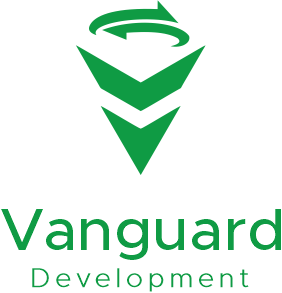The Impact of Interest Rates on Commercial Financing: What Developers Should Know
Interest rates play a crucial role in commercial real estate development, influencing everything from project feasibility to cash flow and long-term profitability. When interest rates fluctuate, the cost of borrowing changes, affecting how developers plan, finance, and execute their projects. Understanding how these rates impact commercial financing is essential for making informed decisions and optimizing project outcomes.
This guide will explore the key ways interest rates impact commercial financing and offer strategies for developers to adapt to changing rates in today’s market.
1. The Direct Relationship Between Interest Rates and Borrowing Costs
The most immediate impact of interest rate changes on commercial financing is the alteration of borrowing costs. When rates rise, the cost to service debt increases, which can affect a project’s bottom line.
- Higher Rates Mean Higher Monthly Payments: Increased interest rates lead to higher loan payments, raising the overall project cost and reducing profitability. Developers must account for this when calculating their pro forma (projected financial performance).
- Lower Rates Can Enhance Cash Flow: Lower interest rates reduce debt service obligations, freeing up cash flow. This can be especially beneficial for projects that rely on stable cash flow from rental income.
Tip: Developers can negotiate fixed interest rates on long-term loans to minimize exposure to future rate hikes, ensuring more predictable borrowing costs over time.
2. Impact on Project Feasibility and Budgeting
Interest rates also play a role in determining whether a project is feasible from the outset. Higher interest rates can make some projects financially unviable due to increased carrying costs.
- Higher Rates Can Deter New Developments: If the cost of capital is too high, developers may reconsider or postpone projects that were previously marginally feasible.
- Rates Affect Project Budgets: Developers need to build interest rate considerations into project budgets to account for potential fluctuations that could affect cash reserves and overall project timelines.
Tip: Building a “rate buffer” into financial projections can help developers ensure their projects remain viable even if rates rise during development.
3. The Effect on Property Valuation and Investor Sentiment
Interest rates have a notable effect on property valuations and investor sentiment. When interest rates rise, capitalization rates (cap rates) tend to rise as well, impacting property values and investment returns.
- Higher Cap Rates and Lower Property Values: Rising interest rates typically lead to higher cap rates, which can decrease property values. Developers planning to sell or refinance properties at completion should consider this potential impact on valuation.
- Investor Sentiment Shifts: In higher-interest environments, some investors may shift to safer, lower-risk investments, reducing available capital for commercial projects. This can impact developers who rely on private equity or investor funding.
Tip: Developers should communicate the potential impact of interest rates on ROI to investors and consider how changes in rates may affect exit strategies, especially for short-term projects.
4. Access to Financing: Lender Requirements and Loan Structures
Higher interest rates can lead to tighter lending conditions as lenders become more risk-averse. This can change the structure and availability of financing options for developers.
- Lenders May Tighten Loan-to-Value (LTV) Ratios: As interest rates rise, lenders may reduce the LTV ratios they offer, requiring developers to put down larger equity stakes or seek alternative funding sources.
- Creative Financing Options: To offset rising rates, developers may look into non-traditional financing, such as joint ventures, bridge loans, or mezzanine financing. These options provide flexibility, though they may come with their own risks.
Tip: Developers should stay updated on evolving lender requirements and explore diversified financing options that can be adapted to a range of interest rate environments.
5. Timing and Exit Strategies
In a rising interest rate environment, timing can significantly impact a project’s success. Whether the developer intends to sell, lease, or refinance the property, interest rates will affect exit strategy options.
- Impact on Refinance Options: Developers who plan to refinance after completion need to consider that rates may be higher at that point. This can impact the cash flow available to investors and the financial performance of the project.
- Influence on Sale Timing: Rising rates can reduce buyer demand, as buyers face higher financing costs. This may limit the pool of buyers and affect the selling price.
Tip: Consider aligning exit strategies with market cycles, and if possible, prepare contingency plans in case the rate environment changes before the project’s planned exit date.
6. Adaptive Strategies for Developers in a Fluctuating Rate Environment
While developers cannot control interest rates, there are strategies to mitigate the risks associated with rate fluctuations.
- Consider Hedging Options: Hedging strategies, such as interest rate swaps or caps, can help developers lock in favorable rates and manage exposure to rate changes.
- Focus on High-Performing Locations: In uncertain rate environments, projects in high-demand areas or with strong tenant demand may be more resilient. Location strength can offset some of the risks associated with higher financing costs.
- Strengthen Cash Reserves: Having sufficient cash reserves can help developers navigate unexpected increases in debt costs, providing a financial cushion during construction or lease-up periods.


Leave A Comment